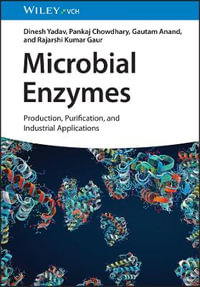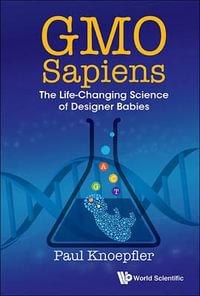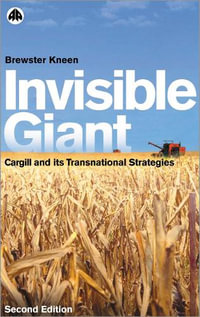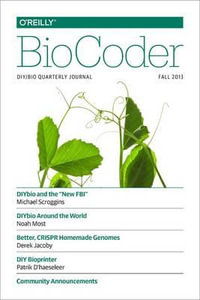Genetic engineering suggests new avenues for constructing useful products, but it also poses hazards to the health of the environment and the public. Delineating those hazards is complicated, difficult, and important at every level of risk assessment and risk management decision-making. Risk assessment and risk management may be further complicated by the need to discover more detailed information than is usually available.
Genetically Engineered Organisms: Assessing Environmental and Human Health Effects gives credence to good science and to the notion that we do not have to argue about the ecological and human health effects of genetic engineering. Instead, it supports the position that we can undertake the painstaking science necessary to identify and understand those effects.
Written by researchers who have done cutting edge research in disciplines such as botany, entomology, plant pathology, and other agricultural and environmental sciences, this book elaborates critical research on pollen movement, spread of transgenes in natural communities, fitness effects, resistance development, and unpredicted impacts on target and non-target organisms. These topics are explored in contexts ranging from Bt corn events and viral resistant oats to transgenic salmon and altered malarial vectors. Many chapters address theoretical and informational gaps that research presents to questions of biosafety, and some offer historical insights into factors that may affect risk assessment and risk management decision-making at the community, national, and international levels.
Industry Reviews
"This collection should be of great value of employees of government agencies or other individual concerned with, (1) conservation of biodiversity in ecosystems, and (2) conservation of natural ecosystems within which agricultural crop production occurs. . . of value as a text for science courses in which students are being prepared for careers in conservation." -Hugh Lehman, Department of Philosophy, University of Guelph ." . . provides a timely summary of existing work, and makes clear the difficulties of assessing the ecological risks of organisms whose biologies are unknown. . . an engaging, sometimes shocking read of actual or potential risks of transgenes in natural systems." -C.L. Sagers, University of Arkansas "I do not know of another volume that brings together the breadth of organisms: vertebrates, arthropods, plants, microorganisms, amazing! Also, the breadth of ecological concerns is well represented: evolution of resistance, crop-to-wild hybridization, etc. "This work will contribute tremendously to the public dialogue on the topic. It provides the science behind many of the concerns -- and provides a clear view of many of the possible outcomes, so that public discussion can progress to focus on those outcomes, rather than on vagueness and distortion" - Norman C. Ellstrand, University of California, Riverside "The table of contents lists some of the very best scientists currently engaged in research on the ecological and human health risks of genetically engineered organisms. In the years since the publication of the last comprehensive look at risks, the authors of these chapters, as well as other scientists, have broadened and deepened our understanding of the risksaccompanying this new technology. I expect this new book to be a standard reference on risk assessment of GE organisms for some years to come." - Jane Rissler, Ph.D., Union of Concerned Scientists "The overall list of chapter authors appears to be outstanding I feel that the chapters do an excellent job in illustrating the research that is needed to examine the impacts of genetically engineered organisms in a sound manner." - David Pimentel, Cornell University, Ithaca, New York, USA "As a text on the possible ecological impact of GEOs, this book raises many important issues and should contribute to an informed debate on a topic that may yet have a significant impact on the future of modern biotechnology. "The major focus of the book is on the various consequences of the release of GEOs into commercial agricultural systems, although there are also chapters on aquaculture and wider environmental systems. The book is organized into 14 chapters, each written by one or more experts in the field, and the editors have done a good job in cross-referencing the various chapters and in providing a comprehensive index. The quality of the chapters is uniformly high, and the low incidence of typographical or other errors points to good attention to sub-editing - something that is not always the case in these days of rapid electronic publication. "In summary, this book is an important contribution to the ongoing debate about the use and release of GEOs into the environment. It elucidates the hitherto somewhat neglected topic of the ecological consequences of such releases. But, more than this, the book also highlights the many fundamental gaps in our knowledge base that hinder even the semblance ofrational scientific debate about many of the broader aspects of the commercialization of GEOs. The book should be required reading for all in the biotechnology research and development areas as well as those involved in policy and risk management." - Denis J. Murphy, School of Applied Science, University of Glamorgan, UK, in INFORM, Vol. 13 "This collection should be of great value for employees of government agencies or other individuals concerned with (1) conservation of biodiversity in ecosystems, (2) conservation of natural ecosystems within which agricultural crop production occurs, (3) government regulators concerned with environmental issues. Indeed, as a result of studies such as these the U.S. Environmental Protection Agency has strengthened the regulation regarding releases of genetically engineered crops to require data concerning effects on non-target species. The book may be of value as a text for science courses in which students are being prepared for careers in conservation. Further, each of the papers includes an extensive list of cited literature that should make the book of great value for students and academics. Since many of the papers included in this collection stress the inadequacy of currently existing scientific knowledge for assessing the seriousness of the above risks of genetic engineering, the book is of value forsuggesting areas in which more research needs to be done." - Journal of Agriculture and Environmental Ethics
























